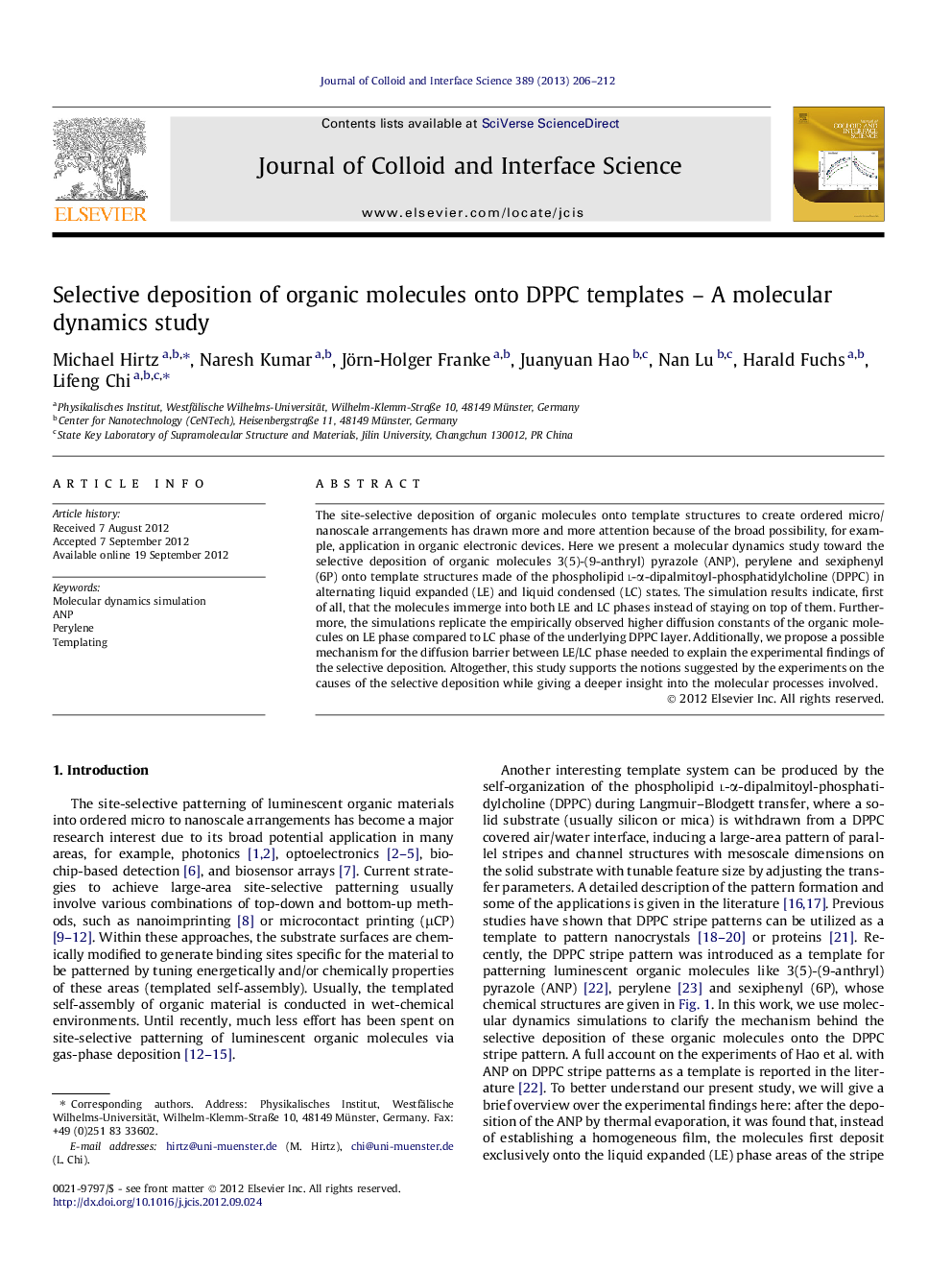| کد مقاله | کد نشریه | سال انتشار | مقاله انگلیسی | نسخه تمام متن |
|---|---|---|---|---|
| 607945 | 880564 | 2013 | 7 صفحه PDF | دانلود رایگان |

The site-selective deposition of organic molecules onto template structures to create ordered micro/nanoscale arrangements has drawn more and more attention because of the broad possibility, for example, application in organic electronic devices. Here we present a molecular dynamics study toward the selective deposition of organic molecules 3(5)-(9-anthryl) pyrazole (ANP), perylene and sexiphenyl (6P) onto template structures made of the phospholipid l-α-dipalmitoyl-phosphatidylcholine (DPPC) in alternating liquid expanded (LE) and liquid condensed (LC) states. The simulation results indicate, first of all, that the molecules immerge into both LE and LC phases instead of staying on top of them. Furthermore, the simulations replicate the empirically observed higher diffusion constants of the organic molecules on LE phase compared to LC phase of the underlying DPPC layer. Additionally, we propose a possible mechanism for the diffusion barrier between LE/LC phase needed to explain the experimental findings of the selective deposition. Altogether, this study supports the notions suggested by the experiments on the causes of the selective deposition while giving a deeper insight into the molecular processes involved.
Figure optionsDownload high-quality image (392 K)Download as PowerPoint slideHighlights
► Molecular dynamics simulation of a DPPC monolayer on a solid support was performed.
► The movement of small molecules in films of different phase states was tracked.
► Diffusion constants for different phase states and temperatures were derived.
► A mechanism for selective deposition of small molecules on DPPC films is proposed.
Journal: Journal of Colloid and Interface Science - Volume 389, Issue 1, 1 January 2013, Pages 206–212